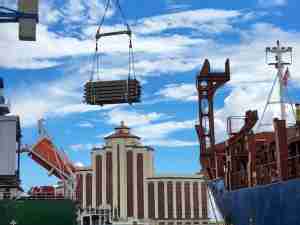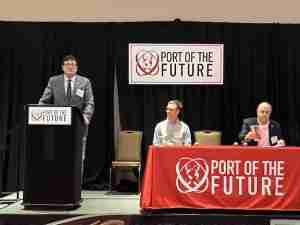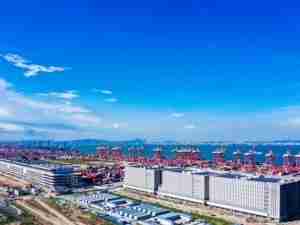“Last year, we didn’t point to a challenging national economy as an excuse for a reduction in port business,” said PRPA Executive Director James T. McDermott, Jr. “We went out and aggressively sought new business, even if many believed it unlikely we could land it. What actually happened was the opposite: Hyundai and Kia made Philadelphia its preferred US East Coast port of entry, Sea Star Line established a major Puerto Rican service here, and M-real, a past port customer, returned to the Port of Philadelphia with its high-quality paper cargoes, to name three major new pieces of business that we attracted in 2010. On top of that, many of our previous cargoes and services moved in an upward trend, too. Now that the economy is showing signs of recovery, we’re already a step ahead.”
Mr. McDermott credits aggressive marketing by PRPA and its terminal operators, along with continued state investment in the Port’s terminals and facilities, as prime components in the turnaround that’s taken place, a turnaround that is occurring faster at the Port of Philadelphia than at other U.S. ports in the wake of the weaker economy of the immediate past years.
“Recent developments have been gratifying,” said Mr. McDermott. “Another example is our MSC European service, which commenced in 2009. Though busy at its outset, that service matured in 2010, significantly increasing activity at the Packer Avenue Marine Terminal.”
Both containerized and non-containerized cargoes all showed healthy gains in 2010. With 264,059 TEU’s of containerized cargo handled in 2010 compared to the 222,900 TEU’s handled in 2009, containers were up a dramatic 18%. Counted as tonnage instead of TEU’s, 1,860,097 metric tons of containers were moved in 2010 compared to the 1,682,356 tons of containers handled in 2009, an 11% gain.
Non-containerized cargoes also showed big increases. With 1,108,329 metric tons of non-containerized cargoes handled in 2010 compared to the 840,876 tons of handled the year before, these cargoes were up 32%. Particular highlights among non-containerized cargoes in 2010 include the following:
Automobiles: Primarily as a result of massive numbers of Hyundai and Kia automobiles that have been arriving at PRPA’s Packer Avenue Marine Terminal since spring of 2010, automobile business here went from being virtually non-existent in 2009 to about 69,000 units being moved in 2010. That business has continued strongly into 2011, with the regular arrival of Glovis automobile-carrying vessels at the Packer Avenue Marine Terminal, with processing of the vehicles taking place at the adjacent Pier 98 Annex Automobile Processing Facility. Computed as tonnage, 77,350 tons of automobiles moved through the Port in 2010, compared to the 496 tons of the same cargo handled the previous year.
Paper: The noted Scandinavian paper manufacturer M-real returned to the Port of Philadelphia after a several year hiatus in 2010, bringing along with it the company’s preferred ocean carrier, Wagenborg Shipping, resulting in a healthy 53% gain in forest products cargoes at the Port in 2010. 389,109 tons of forest products were handled last year here, compared to the 254,522 tons handled in 2009. As well as rolls of high-quality paper, forest products cargoes at the Port include pulp, lumber, and other wood products.
PRPA’s dedicated Forest Products Distribution Center at Delaware and Snyder Avenues in South Philadelphia is the principal handler of the Port’s forest products cargoes. A brand-new, state-of-the-art forest products warehouse opened at the Pier










